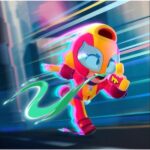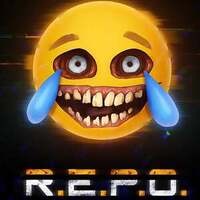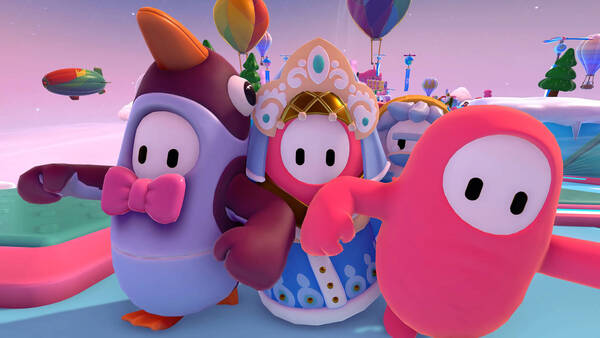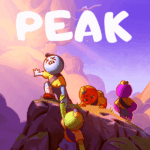Advertisement
Popular Now
Poppy Playtime, a name that sends shivers down the spines of horror enthusiasts and delights the curiosity of lore fanatics, has swiftly carved out a significant niche in the world of independent video games. Developed and published by MOB Games, this episodic survival horror title plunges players into the derelict, unsettling depths of Playtime Co., a seemingly innocent toy factory with a dark and disturbing past. What began as a relatively simple indie horror experience has blossomed into a multi-chapter saga, captivating audiences with its unique blend of jump scares, intriguing puzzles, and a surprisingly complex narrative that unravels piece by terrifying piece. From its initial release in October 2021 with Chapter 1: A Tight Squeeze, Poppy Playtime has grown into a formidable franchise, spawning merchandise, theories, and a dedicated fanbase eager to uncover every last secret lurking within the factory's decaying walls. This article will explore the game's journey, its intricate lore, the chilling characters that inhabit its world, and the profound impact it has had on the horror gaming landscape, offering a comprehensive look at both its strengths and weaknesses.


The Genesis of Fear: Chapter 1 and the Birth of Huggy Wuggy
The world first got a taste of Poppy Playtime's unique brand of horror with the release of Chapter 1: A Tight Squeeze on October 12, 2021. This introductory chapter immediately set the tone, introducing players to the abandoned Playtime Co. factory and the unsettling atmosphere that would become a hallmark of the series. The premise was deceptively simple: as a former employee, you return to investigate the mysterious disappearance of the factory's staff a decade prior. Armed with only a "GrabPack" – a versatile backpack with extendable hands – players navigated dark corridors, solved environmental puzzles, and, most notably, encountered their first terrifying adversary: Huggy Wuggy. Huggy Wuggy, a towering, blue, furry mascot, quickly became an icon of the game. Initially presented as a seemingly benign, if somewhat unsettling, character in promotional materials, his true nature as a relentless pursuer was a chilling revelation. His sudden appearances and distinctive, almost human-like, movements generated widespread fear and fascination. The chapter masterfully utilized a cat-and-mouse gameplay style, forcing players to outsmart and evade Huggy Wuggy in tense chase sequences. This inaugural chapter was a proof of concept that MOB Games had something special on their hands, demonstrating a clear understanding of atmospheric horror and effective jump scares. Its immediate popularity laid the groundwork for the expansive lore and character development that would follow.The Immediate Impact and Huggy Wuggy's Stardom
Chapter 1's success was almost instantaneous, propelled largely by the viral spread of Huggy Wuggy. Content creators across platforms like YouTube and Twitch embraced the game, with countless "Let's Play" videos showcasing player reactions to Huggy's terrifying encounters. This organic marketing catapulted Poppy Playtime into the mainstream, introducing it to a broad audience far beyond traditional horror gaming circles. The character's design, a deceptively friendly appearance twisted into something menacing, resonated deeply with viewers, creating a lasting impression.Early Pros and Cons
Pros of Chapter 1:- Effective Atmosphere: The decrepit factory environment, coupled with unsettling sound design, created a genuinely creepy ambiance.
- Iconic Villain: Huggy Wuggy's design and relentless pursuit made him an instant horror icon.
- Innovative Gameplay Mechanic: The GrabPack offered unique puzzle-solving and environmental interaction opportunities.
- Strong Opening Lore: Hints of a dark past within Playtime Co. immediately piqued player curiosity.
- Short Playtime: Many players felt the chapter was too brief, leaving them wanting more.
- Limited Variety: While effective, the singular focus on Huggy Wuggy meant less enemy diversity.
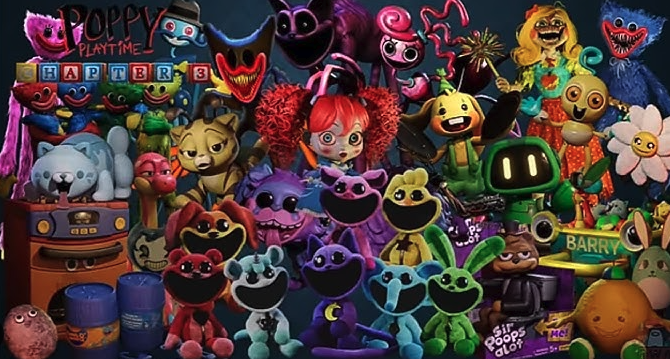
Expanding the Terror: Chapter 2 and the Emergence of Mommy Long Legs
Following the resounding success of its debut, MOB Games released Chapter 2: Fly in a Web on May 5, 2022, significantly expanding the Poppy Playtime universe. This chapter built upon the foundations laid by its predecessor, introducing new environments, more complex puzzles, and, most notably, a new primary antagonist: Mommy Long Legs. Where Huggy Wuggy was a brute force of terror, Mommy Long Legs presented a more manipulative and psychologically unsettling threat. Mommy Long Legs, a tall, stretchy, and seemingly maternal doll, was a master of games and deception. Her pursuit of the player was less about direct confrontation and more about psychological torment, forcing the player to participate in twisted versions of classic children's games. This shift in antagonist style showcased MOB Games' willingness to experiment and diversify their horror approach. Chapter 2 also delved deeper into the lore of Playtime Co., hinting at disturbing experiments and the true nature of the "toys" that inhabit the factory. The addition of new GrabPack abilities, such as the ability to swing and transfer power, also added new layers to the gameplay, offering more dynamic puzzle solutions and traversal options.The Evolution of Gameplay and Narrative
Chapter 2 marked a significant step forward in both gameplay mechanics and narrative depth. The introduction of new GrabPack abilities not only enhanced the puzzle-solving experience but also provided more dynamic movement options, making exploration feel more fluid and engaging. The puzzles themselves were more intricate, requiring greater thought and environmental interaction. Narratively, the chapter began to unravel more of Playtime Co.'s grim history, introducing snippets of information through environmental storytelling and audio logs that hinted at the factory's sinister experiments and the tragic fates of its employees.Mommy Long Legs: A New Kind of Horror
Mommy Long Legs proved to be a formidable and memorable antagonist, distinct from Huggy Wuggy. Her playful yet menacing demeanor, coupled with her ability to stretch and contort her body, made her a genuinely unsettling presence. The "games" she forced players into were particularly effective in building tension and dread, showcasing a more psychological form of horror that relied less on jump scares and more on sustained suspense.Pros and Cons of Chapter 2
Pros of Chapter 2:- Diverse Antagonist: Mommy Long Legs offered a fresh and more psychologically unsettling form of horror.
- Expanded Lore: The chapter delved deeper into the dark history of Playtime Co., providing more context and mystery.
- Improved Gameplay Mechanics: New GrabPack abilities and more complex puzzles enhanced the player experience.
- Longer Playtime: The chapter was significantly longer than its predecessor, offering more content.
- Pacing Issues: Some players found certain segments to be slow or tedious, particularly during puzzle sequences.
- Predictable Jump Scares: While generally effective, some jump scares felt a bit telegraphed.
The Anticipation Builds: What We Know About Chapter 3
Following the dramatic conclusion of Chapter 2, the anticipation for Chapter 3: Deep Sleep reached a fever pitch. While details remain somewhat under wraps to maintain suspense, MOB Games has provided tantalizing glimpses and hints that suggest a darker, more intense experience awaits players. The title itself, "Deep Sleep," evokes a sense of dormancy, perhaps hinting at a new, even more powerful entity awakening, or a deeper dive into the unconscious horrors of the factory. Trailers and teasers have showcased new environments that appear even more dilapidated and claustrophobic than previous chapters, suggesting a descent into the true heart of Playtime Co.'s forbidden zones. There's been a strong emphasis on a new, highly anticipated antagonist, potentially even more disturbing than those that came before. Speculation runs rampant regarding the identity and abilities of this new threat, with fans dissecting every frame of promotional material for clues. The narrative is also expected to advance significantly, potentially revealing more about the Prototype and the grander conspiracy within the factory. The stakes feel higher than ever, and players are bracing themselves for the most chilling chapter yet.New Villains and Environmental Horrors
The teasers for Chapter 3 have strongly suggested the introduction of new horrifying entities, each designed to elicit a unique sense of dread. One prominent figure hinted at is CatNap, a character seemingly associated with a gas that induces vivid hallucinations, promising a more psychological and disorienting form of horror. The environments also appear to be evolving, becoming even more oppressive and labyrinthine, pushing players further into the decayed heart of Playtime Co.Expanding the GrabPack's Capabilities
While details are scarce, it's reasonable to expect further enhancements to the GrabPack in Chapter 3. Each chapter has introduced new functionalities, and "Deep Sleep" will likely continue this trend, offering players new tools to navigate the factory's dangers and solve increasingly complex puzzles. This constant evolution of the core gameplay mechanic ensures that the experience remains fresh and engaging for players.
The Lore Unveiled: Decoding Playtime Co.'s Dark Secrets
One of the most compelling aspects of Poppy Playtime is its intricate and progressively revealed lore. What initially seems like a simple "haunted toy factory" premise quickly unravels into a complex narrative of scientific malpractice, unethical human experimentation, and the tragic consequences of unchecked ambition. Through scattered documents, audio logs, environmental storytelling, and the very existence of the monstrous toys themselves, players piece together the horrifying truth behind Playtime Co.'s operations. The core of the lore revolves around the "Bigger Bodies Initiative," a clandestine project aimed at transferring human consciousness into toy bodies, ostensibly to create eternal playmates. However, these experiments went horribly wrong, resulting in the grotesque, sentient beings that now stalk the factory. The suffering of the "subjects" – often implied to be orphans or vulnerable individuals – and their transformation into vengeful entities form the emotional core of the narrative. Characters like Poppy herself, the titular doll who acts as a guide, and the mysterious Prototype, the overarching antagonist pulling the strings, are central to this dark history. The lore encourages deep analysis and speculation, turning every new discovery into a vital clue in the larger mystery.The Bigger Bodies Initiative: A Twisted Experiment
The "Bigger Bodies Initiative" stands as the central pillar of Poppy Playtime's lore, revealing the true, horrific nature of Playtime Co. This project, spearheaded by morally bankrupt scientists, aimed to transfer human consciousness into the bodies of Playtime Co.'s toys. The motivation behind this was seemingly to create "perfect" and "eternal" companions for children, but the methods were incredibly unethical, and the results were disastrous. The very monsters players encounter are the direct result of these failed, or perhaps too successful, experiments.The Prototype and its Influence
The Prototype is arguably the most enigmatic and terrifying entity within the Poppy Playtime lore. Rarely seen, yet ever-present, this creature is hinted to be the progenitor of the Bigger Bodies Initiative's failures, and a powerful, intelligent being that exerts a significant influence over the other toys. Its true form and intentions remain shrouded in mystery, making it a constant source of speculation and dread for players. The Prototype represents the ultimate culmination of Playtime Co.'s depravity, embodying the horrifying consequences of playing god.The Role of Poppy
Poppy Playtime, the titular doll, is more than just a namesake. She acts as a guiding, albeit sometimes cryptic, figure throughout the game, offering hints and insights into the factory's past. Her true nature and allegiance are often ambiguous, adding another layer of intrigue to the unfolding narrative. She is a key to understanding the motivations and history of the Bigger Bodies Initiative, and her presence often signals significant plot developments.The Monsters Within: A Gallery of Playtime Co.'s Creations
The true horror of Poppy Playtime lies in its unsettling cast of monstrous toys. Each antagonist is not merely a jump scare delivery system but a character with a tragic backstory, a product of Playtime Co.'s perverse experiments. Beyond Huggy Wuggy and Mommy Long Legs, the factory is home to a chilling menagerie of twisted childhood icons.- Huggy Wuggy: The initial antagonist, a tall, blue, furry mascot who embodies relentless, predatory pursuit. His transformation from a cheerful toy to a terrifying killer sets the tone for the factory's horrors.
- Mommy Long Legs: A stretchy, manipulative doll who forces players into deadly games, representing a more psychological and cunning form of terror.
- Bron: A large, red dinosaur toy, seen in various states of disrepair, often associated with ambient sounds of danger and lurking threats. While not a direct pursuer in the same vein as Huggy or Mommy, his presence adds to the oppressive atmosphere.
- Candy Cat: A seemingly innocuous cat character, often depicted with a menacing grin, hinting at a darker nature beneath its cheerful exterior.
- Boogie Bot: A small, agile robot, often serving as a minor environmental threat or a puzzle element.
- The Smiling Critters: A group of vibrant, animal-themed toys, seemingly designed for companionship, but whose cheerful facades belie a sinister past and potentially dangerous present.
- CatNap: The presumed primary antagonist of Chapter 3, hinted to possess abilities that induce hallucinations and psychological distress, promising a new dimension of fear.
The Psychology of Fear: How Poppy Playtime Terrifies
Poppy Playtime's success in terrifying players stems from a clever combination of psychological horror techniques and effective jump scares. It understands that true fear isn't just about sudden loud noises; it's about building dread, exploiting vulnerability, and twisting the familiar into something horrifying.Atmospheric Dread
The game excels at creating an oppressive atmosphere. The decaying factory, dimly lit and filled with unsettling industrial noises, constantly reminds the player of their isolation and vulnerability. The sound design is particularly masterful, using distant thuds, creaks, and distorted childlike laughter to suggest unseen dangers lurking just beyond view. This environmental storytelling builds a continuous sense of unease, making even quiet moments feel tense.Uncanny Valley and Body Horror
The designs of the toys themselves are deeply unsettling, leaning heavily into the "uncanny valley" effect. Their familiar, innocent shapes are distorted by their grotesque proportions, unnatural movements, and often menacing expressions. This creates a sense of discomfort because they are almost human, yet fundamentally wrong. The lore's emphasis on human consciousness being trapped within these toys also introduces elements of body horror, making the player confront the horrific implications of the Bigger Bodies Initiative.Cat-and-Mouse Gameplay
The core gameplay loop, particularly with Huggy Wuggy and Mommy Long Legs, revolves around a cat-and-mouse dynamic. Players are often unarmed and vulnerable, forced to rely on stealth, evasion, and clever use of their GrabPack to survive. This feeling of powerlessness amplifies the fear, as every encounter becomes a desperate struggle for survival. The pursuit sequences are designed to be relentless, ensuring a constant adrenaline rush.Exploiting Childhood Innocence
Perhaps the most insidious aspect of Poppy Playtime's horror is its perversion of childhood innocence. Toys, symbols of comfort and joy, are transformed into instruments of terror. This subversion of expectation creates a profound sense of unease, as something fundamentally benign is twisted into something utterly malevolent. The vibrant colors and playful designs of the factory itself only serve to heighten the contrast with the horrors that lurk within.
The Phenomenon: Merchandise, Fan Theories, and Spin-offs
Poppy Playtime's impact extends far beyond the game itself, blossoming into a full-fledged multimedia phenomenon. Its unique characters and compelling lore have fostered a massive and passionate fanbase, driving an ecosystem of merchandise, intricate fan theories, and even spin-off projects.Merchandise Mania
The popularity of characters like Huggy Wuggy and Mommy Long Legs has led to a boom in official and unofficial merchandise. Plush toys, action figures, apparel, and collectibles featuring the game's iconic monsters are highly sought after by fans. This tangible connection to the game allows players to extend their engagement with the franchise beyond the screen, cementing its status as a cultural touchstone. The sheer volume of merchandise available underscores the widespread appeal of the characters, even among those who might not play the game directly.A Hotbed of Fan Theories
The enigmatic lore and unanswered questions within Poppy Playtime have turned the fanbase into a vibrant community of amateur sleuths and theorists. Every new detail, every hidden message, and every character interaction is meticulously analyzed and debated. YouTube channels and online forums are rife with elaborate theories attempting to decipher the true nature of the Prototype, the fate of the factory's employees, and the ultimate goals of Poppy herself. This active engagement with the narrative adds significant replayability and depth to the overall experience, as players constantly re-evaluate their understanding of the game's world.Emerging Spin-offs and Adaptations
The success of Poppy Playtime has also paved the way for potential spin-offs and adaptations. While specific details might be scarce, the potential for animated series, comic books, or even feature films based on the rich lore and compelling characters is immense. This expansion into other media forms would further solidify Poppy Playtime's position as a major player in the horror entertainment landscape, reaching even broader audiences and exploring new facets of its terrifying universe. The brand's ability to transcend its gaming origins speaks volumes about its inherent appeal and the strength of its creative vision.The Good, The Bad, and The Unsettling: A Critical Review
Poppy Playtime has undeniably made a significant splash in the horror genre, garnering both widespread acclaim and some critiques. Understanding its strengths and weaknesses provides a balanced perspective on its place in the gaming world.The Pros: What Poppy Playtime Does Right
- Exceptional Atmosphere and Sound Design: The game masterfully crafts a tense and eerie environment. The dilapidated factory, combined with unsettling sound effects and music, creates a pervasive sense of dread that is truly effective.
- Memorable Antagonists: Huggy Wuggy, Mommy Long Legs, and the hints of future villains are incredibly well-designed. Their distinct personalities and methods of pursuit keep the gameplay fresh and terrifying. Their designs, a twisted take on childhood innocence, are particularly potent.
- Engaging Lore and Mystery: The slowly unfolding narrative of Playtime Co.'s dark experiments is highly compelling. It encourages players to actively seek out clues and piece together the horrifying truth, providing a deeper level of engagement beyond mere survival.
- Innovative Gameplay Mechanics (GrabPack): The GrabPack is a versatile and fun tool that adds unique puzzle-solving and traversal elements, distinguishing Poppy Playtime from other horror games.
- High Production Value for an Indie Game: Despite being an indie title, the game boasts impressive graphics and polish, contributing to the immersive experience.
- Strong Community Engagement: The game has fostered a highly active and creative fanbase, contributing to its longevity and cultural impact.
The Cons: Areas for Improvement
- Pacing Issues in Later Chapters: While Chapter 1 was tightly paced, some segments in Chapter 2, particularly certain puzzle sequences, could feel drawn out or tedious for some players, disrupting the flow of fear.
- Reliance on Jump Scares (at times): While generally well-executed, the game occasionally relies on predictable jump scares, which can diminish their effectiveness over time for seasoned horror players.
- Limited Replayability (per chapter): Once a chapter is completed and the puzzles are known, the replay value beyond experiencing the narrative again can be somewhat limited.
- Monetization Model (Episodic Releases): The episodic release model, while common, can be a point of contention for players who prefer to experience the full story at once. While understandable for indie development, it means waiting for the complete narrative.
- Story Ambiguity: While the mystery is a strength, some players might find the slow drip-feed of information and the overall ambiguity of the lore frustrating at times, desiring more concrete answers sooner.
The Future of Fear: What Lies Ahead for Poppy Playtime
As Poppy Playtime continues its episodic journey, the future looks both promising and terrifying. With Chapter 3 on the horizon and the overarching narrative still unfolding, MOB Games has a significant opportunity to solidify the franchise's legacy in horror gaming. The success of the game thus far hinges on its ability to consistently deliver innovative horror experiences, deepen its compelling lore, and introduce new, memorable antagonists. The community's anticipation for each new chapter underscores the strong foundation that has been built. We can expect further exploration of the Bigger Bodies Initiative, potentially encountering more grotesque creations and uncovering the ultimate fate of the factory's human inhabitants. The role of the Prototype and Poppy herself will undoubtedly become clearer, guiding players towards a climactic revelation. Furthermore, the expansion of the Poppy Playtime universe into other media, such as animation or even film, seems increasingly likely given its widespread popularity. This would allow for a broader exploration of the lore and characters, reaching audiences beyond the gaming community. Ultimately, the future of Poppy Playtime will be defined by its ability to continue surprising and terrifying players, while delivering on the promise of its intricate and deeply disturbing narrative. The journey into the heart of Playtime Co.'s darkness is far from over, and fans are eagerly awaiting the next chilling chapter.Poppy Playtime's Rating
Based on its significant impact, innovative elements, and compelling horror, Poppy Playtime merits a strong overall rating within the horror genre. Overall Rating: 8.5/10 Breakdown of Rating:- Horror Effectiveness: 9/10 (Excellent atmosphere, unique monster designs, effective jump scares and psychological dread)
- Gameplay Innovation: 8/10 (GrabPack is a fresh mechanic, puzzles are engaging)
- Story & Lore: 9/10 (Deep, intriguing, and consistently evolving narrative)
- Visuals & Sound: 8.5/10 (High quality for an indie game, excellent sound design)
- Replayability: 7/10 (While the narrative is strong, individual chapters have limited replay value once completed)
- Community Engagement: 9.5/10 (Vibrant fanbase, active theory crafting, significant cultural impact)









